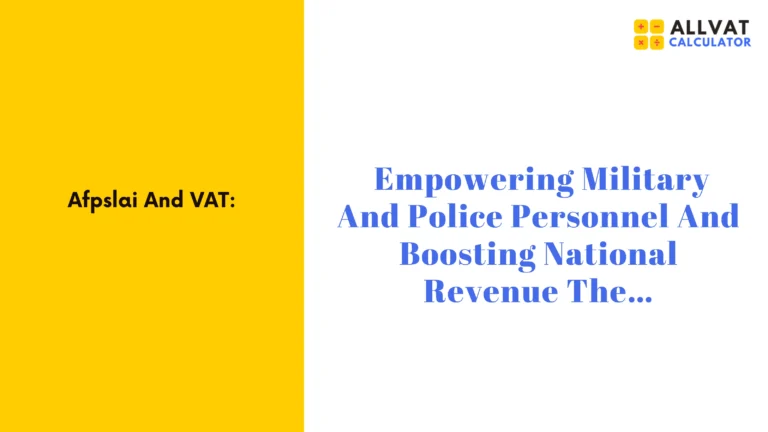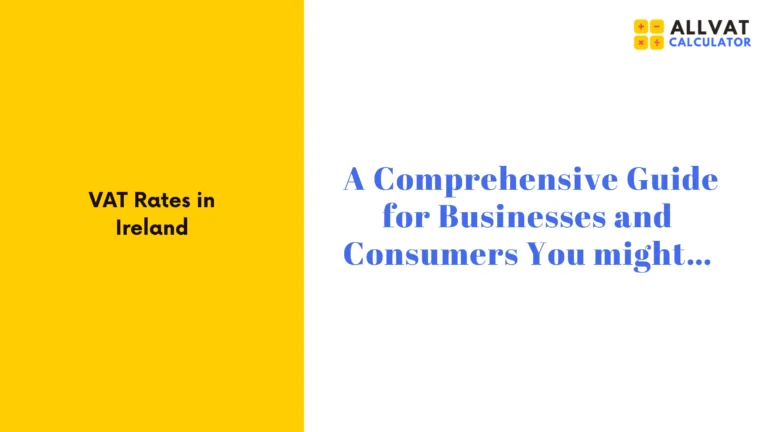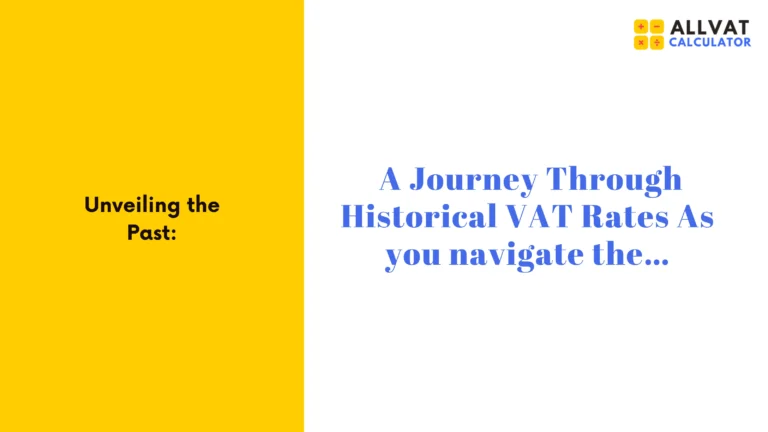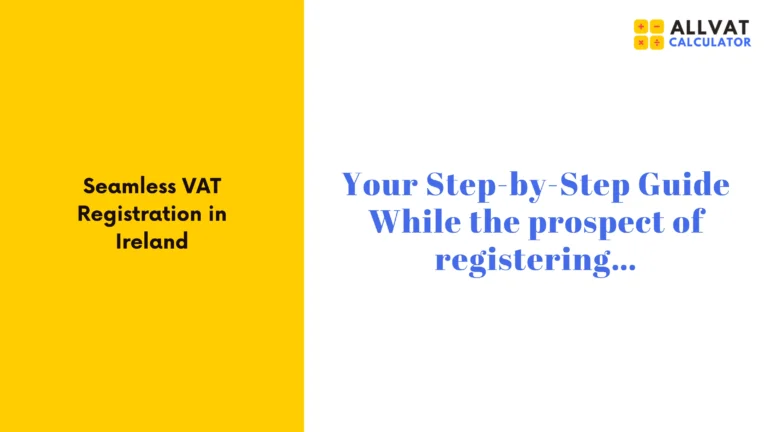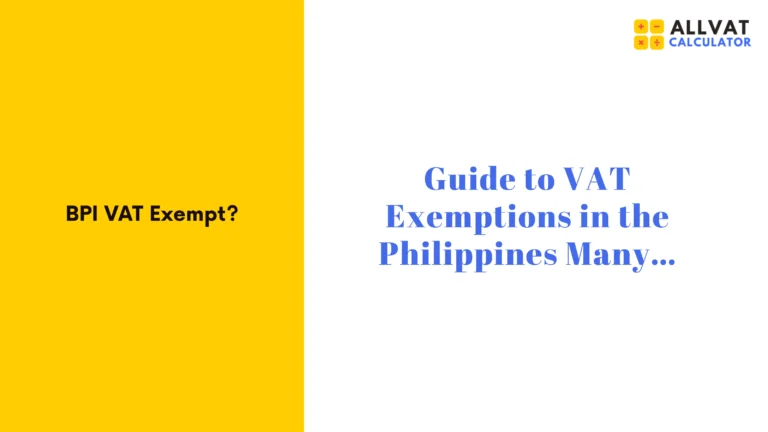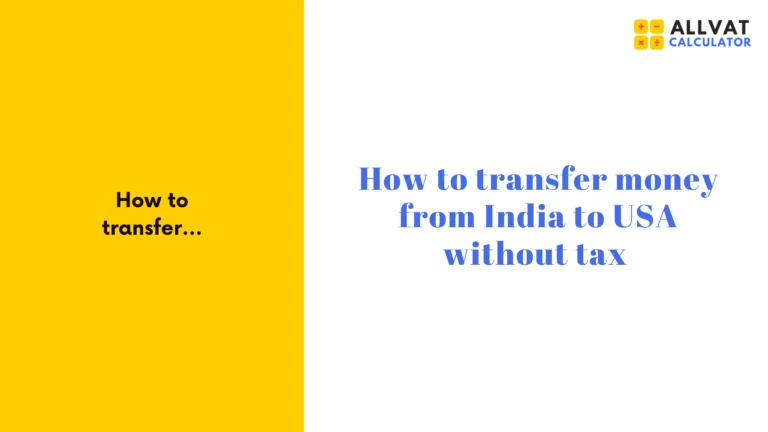VAT Flat-Rate Scheme: Ireland Farmers Guide
VAT Flat-Rate Scheme: Ireland Sector Guide
According to the old saying, “Don’t count your chickens before they hatch,” and in the case of the Irish VAT Flat-Rate scheme the advice rings particularly true.
Created to make VAT accounting simpler for small and medium-sized businesses as well as farmers The scheme has potential advantages but it’s not without sacrifices. Although it may reduce administrative burdens but it can cause more VAT obligations when not properly examined against your company’s business model.
What Is the Scheme for VAT Flat rate?
The VAT Flat-Rate Scheme in Ireland permits farmers who meet the requirements (and certain other industries) to increase a set percentage (currently 5.4 percent) to the selling cost of their products when they sell to VAT registered businesses.
This percentage is a way to compensate in part for inability to claim VAT on inputs which makes compliance easier by removing the requirement to record VAT for every sales and purchases.
The scheme is designed specifically for farmers who are not registered or certain types of traders but not for firms that are registered under the VAT standard system.
Benefits for Farmers and Small Businesses
1. Simplified VAT Administration
- There is no need to register to VAT or prepare VAT returns.
- No tracking of the input VAT or VAT for every transaction.
- Perfect ideal for smaller farms or small businesses that have little resources for bookkeeping.
2. Cash Flow Boost
- You get 5.4 percent extra when you sell to VAT registered customers that you keep as a compensation.
- This can improve margins particularly if your input VAT would otherwise be minimal.
3. Sector-Specific Fit
- Particularly advantageous for farmers of livestock and crops which have supply chains that usually involve selling to VAT-registered retailers or processors.
- Services for maintenance (e.g. buildings, farms buildings) can benefit indirectly, by less needing to take into account input VAT.
Potential Drawbacks to Consider
1. No Input VAT Recovery
- You aren’t able to take back VAT for construction equipment, farm equipment fuel, feed or professional services.
- This is an issue for businesses that make massive capital investments as well as has large operating costs.
2. Cash Flow and Payment Timing Issues
- You may need to pay VAT to Revenue before receiving payment from customers especially challenging for businesses with long payment terms.
3. Flat Rate May Not Reflect Reality
- If you run a business with lower profits or if you pay significant in-put VAT The flat-rate increase might not be enough to cover your total VAT cost.
- This could result in greater tax cost effective than a standard VAT registration.
Flat-Rate Scheme vs. Standard VAT: Key Differences
| Feature | Flat-Rate Scheme | Standard VAT System |
|---|---|---|
| VAT Registration | Not necessary | Mandatory if the threshold is higher than |
| VAT Returns | Not Filled | You must prepare regular VAT returns on a regular basis. |
| Input VAT Reclaim | It is not allowed. | Reclaimable for qualifying items |
| Output VAT on Sales | 5.4 percent increase to the price | At regular rate of VAT (e.g. 23%) |
| Record-Keeping | Minimal | Tracking needs to be precise |
| Best for | Farms with low-cost, low-VAT | Businesses that have high VAT costs |
Impact on Pricing and Market Competitiveness
For non-VAT registered customers, your prices may appear more competitive, as you don’t charge standard VAT.
However, for those who have registered for VAT they don’t have any real benefit–they don’t have the chance to reclaim the flat rate additional charge, which can reduce your price less appealing when compared to other VAT suppliers.
The organization’s business plan, your customer base and the structure of your input cost should be the basis for your pricing strategy in this model.
Sector-Specific Insights
Crop Producers
- Profit from VAT-friendly processing and cash flow increases.
- Keep an eye out for the cost of fertilizer and machinery that could be significant in the long run.
Livestock Farmers
- Most often, they are able to have lower in-put VAT and therefore make the scheme a better match.
- They must ensure they collect the 5.4 percent VAT for selling to VAT registered buyers.
Diversified Farms
- May be faced with mixed supply (standard-rated as well as exempt) which can complicate the calculation of benefits.
- When you are involved in the activities which require inter-EU purchases or the use of significant services or significant services, you could lose your eligibility or be required to register for VAT standard.
Administrative Simplicity vs Financial Precision
Benefits:
- It saves time and helps with bookkeeping.
- This is beneficial for farmers who focus on the day-to-day production instead of tax compliance.
Risks:
- Loss of VAT reclaims on input on the essential equipment or for construction.
- Taxpayers may be charged more over a period of time than under the normal scheme.
Is the Flat Rate Scheme Right for You? Key Questions to Ask
- Have you got lower cost of VAT on inputs?
- Do you mostly sell to customers who are VAT registered?
- Do you wish to avoid the VAT return and complicated bookkeeping?
- Are your capital investment small or not frequent?
If you said “yes!” to a majority of them, then the flat-rate system could provide the most simplicity and effectiveness. In other cases you could opt for the traditional VAT scheme can provide longer-term savings.
FAQs: VAT Flat Rate Scheme in Ireland
What is the Flat Rate for Farmers in Ireland?
A flat fee is 5.4 percent and is added on your sales to make up for VAT costs that which you can’t reclaim.
What Are the Main Disadvantages?
Taxes aren’t refundable on purchases. This can be expensive if you spend massively in the purchase of equipment, services or inputs.
Who Should Use the Scheme?
Farmers who are not registered or small traders with a low input VAT, and mostly VAT-registered clients.
Can Farmers Claim VAT Back in Ireland?
Only in certain conditions, such as land drainage or the construction of new structures typically only if VAT is registered in accordance with the standard procedure.
Conclusion: Make the Right Call for Your Business
The VAT Flat-Rate Scheme in Ireland is a potent instrument to improving tax efficiency but this isn’t a universal solution.
Examine your cost of input, customer base and growth strategies prior to committing. If the simplicity of your plan is more important than potential loss from reclaiming, it might be a good fit. In other cases, the traditional VAT registration might provide more control over your financials.
Get a tax professional’s advice or utilize Revenue’s online tools for determining the best option for your particular situation.


